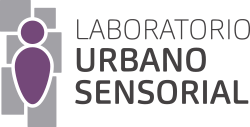User-focused urban planning and design can no longer be taught based solely on theoretical metadata. Learning must be based on the student’s experience to understand and resolve a more complex reality by using a combination of research tools and analysis.
By Talía González Cacho
tgonzalezc@itesm.mx
Is it really possible to design a city that enhances the quality of living? The Sensory Urban Laboratory (LUS – Spanish acronym), created by professors of the Technológico de Monterrey, consists of a methodology assisted by a platform and sensors to gauge the emotional response of public space users.
The LUS combines qualitative analyses developed by architects and bachelors in industrial design with quantitative analyses carried out by computer technology engineers and mechanical-electrical engineers. The strategies are designed to spark the students’ interest in the results providing them a personalized learning experience in different fields of specialization.
With LUS you can see the emotional response of users in a public space.
The term ‘smart city’ has become increasingly popular lately. The state government of Puebla, in Mexico, has recently named the city as ‘Design capital’ and intends to transform it into a ‘smart city’ (Petrolo, 2015).
As ‘smart cities’ make progress, the idea of livable cities gains ground. Based on this year’s conference “Livable Cities for the 21st Century”, Jan Gehl, the Danish architect and urban planner, describes livable cities as those in which the planning strategies for such cities are based on the people. Gehl and his renowned firm work with governments worldwide to consolidate the idea of creating this type of cities. Jan Gehl talks about cities in which the users feel connected with the surroundings because the space is designed to their scale.
The Sensory Urban Laboratory strives to integrate the two schools of thought by collecting reliable data about the emotional response of the people in the city of Puebla to public spaces. This will enable our students to make informed design decisions.
data-animation-override>
“User-focused urban planning and design can no longer be taught based solely on theoretical metadata.”
Urban design starts with defining the issue, which in turn is determined by data gathering and analysis. The more accurate and factual the initial collected data is, the better the propositions for solutions will be. However, this information has not taken into consideration the users’ emotional response.
A study of the emotions produced by a space is indeed a complex undertaking. Nevertheless, data gathering can currently be done more easily and automated by using different technologies such as sensors. The advantage we obtain from them is information called metadata or ‘big data’ in real time.
The problem is that we continue to rely on traditional research methodologies and tools such as polls and surveys to gauge the city’s perception. User-focused urban planning and design can no longer be taught based solely on theoretical metadata. Learning must be based on the student’s experience to understand and resolve a more complex reality by using a combination of research tools and analysis.
The true innovation of the LUS is to be able to link technology, knowledge, and empathy with the users. In addition to this trinomial, we build a platform where geo-referenced projects are stored thereby generating a structure for iterative learning. This system gives us leverage to optimize the acquired learning and push the boundary of education along instead of starting from scratch each time.
The conceptualization of the laboratory began in 2012 with a project called Barter City. The project originally sought to enhance the quality of life in public spaces by implementing a strategy of public participation and art. It was, however, difficult to replicate in the short term. In 2014 I developed a research to understand the relationship between public spaces, state of mind and economic development. Such investigation became in 2015 the basis for the call for proposals for the educational innovation project NOVUS of the Tecnológico de Monterrey.
data-animation-override>
“The real innovation is to link technology, knowledge and empathy with users.”
In the project’s first phase we faced the problem of measuring emotions in such a way that we could report them to a database. To arrive at a solution we used two strategies – quantitative and qualitative – which ultimately rendered an integrated diagnosis. For the quantitative part, we began developing a sensor using Arduino and Raspberry technology. In late 2016, the Bosch group developed a sensor that measures humidity, temperature, light, and noise. This is the one we ultimately adopted.
The great advantage of LUS on how we are currently teaching is that we can now link theoretical knowledge with real life, spurring the students’ interest. Furthermore, this learning is iterative, that is, each semester we build on the bases of prior learning. It should be noted that it is based on a platform that, by its very nature, is still under construction. We continue to work to make the system more intuitive based on the information that is gathered.
We are pleased to see that the students and professors that have had the chance to use it have found important learning advantages as well as the possibility to follow up on projects even passing from one semester to another.
The platform is open to the public at itesmlus.ml. The user guide and mobile app can be found there. Finally, the objective is to provide strategies that serve as a motivation to approach urban design.
About the Author
Talía González Cacho is an architecture professor at Campus Puebla. She was awarded a Master’s Degree in Architecture and City by the University of Alcalá in Spain. In 2015 she acknowledged as an Inspiring Professor of the Tecnológico de Monterrey.
This article from Observatory of the Institute for the Future of Education may be shared under the terms of the license CC BY-NC-SA 4.0 
)
)




)